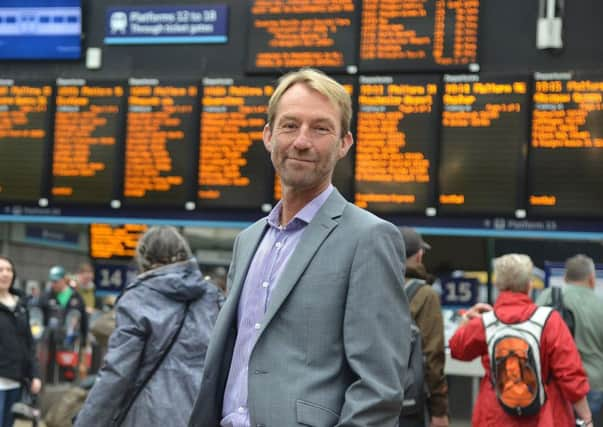On track to drive business and tourism into the Borders
This article contains affiliate links. We may earn a small commission on items purchased through this article, but that does not affect our editorial judgement.


Fast forward five decades and the route’s partial replacement, the Borders Railway, stretching 35 miles from the Scottish capital to Tweedbank, just beyond Galashiels, would appear to be flourishing, attracting visitors and new investment into the Borders communities that it serves.
There are now calls for the line to be continued 60 miles further south to Carlisle, reinstating the original historic route, with ministers pledged to look into the feasibility of such an extension.
• READ MORE: Borders Railway could be extended to Carlisle
Advertisement
Hide AdAdvertisement
Hide AdAs the new Borders Railway hurtles towards its second anniversary, the partnership that oversees the service is confident it can convince more businesses to relocate and expand thanks to the existence of a reliable alternative to the, at times treacherous, A7 trunk road.
One of those with a key role in getting that message across is Phil Dibsdale, inward investment manager for the Borders Railway Blueprint Group, who is leading a new campaign – dubbed “Borders Railway: More Connected” – that will use the line as a catalyst for economic and social regeneration.
Dibsdale, who has more than 25 years’ experience in the property industry as a regeneration and development expert and general practice surveyor, says there are some obvious areas to tap into.
“Primarily we are following the main growth sectors in Scotland,” he says. “Food and drink is incredibly strong and there is potential for more growth. Tourism is a key area, with the ability to draw both domestic and international tourists down from Edinburgh. Alongside that, you have sectors like energy, life sciences, financial and business services, that are already quite strong across the region but there is scope for further growth.
“Businesses often cluster and like to be in and around their peers. The creative sector is another strong component with potential for growth particularly off the back of Edinburgh’s events programme.”
While the route has suffered some disruption caused by conductors’ strikes, trains breaking down and signalling faults, as well as facing criticism that much of it remains single track, thereby restricting service capacity, a recent independent study provided plenty of encouragement.
More than 90 per cent of respondents agreed that the railway promoted access between the Scottish Borders/Midlothian and Edinburgh, a similarly high percentage agreed that it encouraged a shift from the car to public transport, and 79 per cent agreed that it improved access to Edinburgh’s job market.
Advertisement
Hide AdAdvertisement
Hide AdMeanwhile, almost two-thirds of tourist users stated that the line was a factor in their decision to make their trip and almost a quarter stated that they would not have undertaken the journey were it not for the new railway.
Dibsdale says that gaining access to a good work/life balance is becoming an increasingly important factor for people, with the railway making commuting from Borders settlements to the capital a more viable, year-round, proposition. He is also alive to the fact that any expansion of local communities has to be controlled.
“One of the aspects I am working on with the blueprint group and authorities is master planning the key settlements in and around the stations – making sure you can maximise the opportunities so that you have sustainable access to the railway as opposed to uncontrolled sprawl.
“The topography in the Borders is a restricting factor anyway, controlled by valleys and rivers, but you have to ensure a good mix of uses so that it isn’t all residential.
“For a business audience, it can be more of a slower burn in terms of making a decision on relocating and the like,” he adds. “Part of the campaign we are running is around general awareness. And by the end of the year the vast majority of the areas along the line will have access to high-speed broadband, which is increasing as new housing comes on stream.”
“From my perspective, it is clear that the existing line is giving rise to an economic benefit and that will only continue. We are really only at the tip of the iceberg.”
30-SECOND CV
Job: Inward investment manager, Borders Railway Blueprint Group/Director PRD Regeneration Limited
Born: Hertfordshire, 1964
Advertisement
Hide AdAdvertisement
Hide AdEducation: First class honours degree in land administration
First job: Washing glasses in a public house
What car do you drive? Volvo
Favourite mode of transport: Bicycle
Music: Indie
Reading material: Fiction
Can’t live without: Fresh air!
What makes you angry? Injustice
Favourite place: Nepal
Best thing about your job: Making a difference
Best business advice you’ve ever been given: Follow your instincts